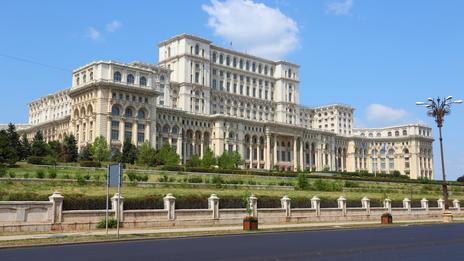This post may contain affiliate links. We may earn money or products from the highlighted keywords or companies or banners mentioned in this post.
We’ve all heard of the Coliseum, the Great Wall of China, and the Taj Mahal. But what about the world’s undiscovered architectural wonders: the man-made marvels where most crowds don’t stray?
To uncover a few of those hidden structures, we turned to question-and-answer site Quora, asking “What are some lesser known architectural landmarks in the world?”
Palace of the Parliament, Romania
The world’s largest, most expensive and heaviest civilian administrative building, Bucharest’s Palace of the Parliament is truly an unknown wonder. “Built by hated communist dictator Nicolae Ceausescu… the building is so huge that it is difficult to take a photograph that does its scale justice,” said Quora user Jann Hoke, a lawyer who worked in the palace in the mid-1990s.

- The Palace of the Parliament in Bucharest, Romania has some 3,100 rooms covering 330,000sqm. (Thinkstock)
Built in 1984, the neoclassical building has 12 stories (with eight additional stories underground), and some 3,100 rooms covering 330,000 sqm. The project cost an unprecedented 3.3bn euros, but it also cost the people of Bucharest much of their city. To build the Palace of the Parliament, one-fifth of central Bucharest was razed, including most of its historical districts, more than 30 churches and synagogues and some 30,000 homes.
“The patterned carpets on the main level, which run through hundreds of yards of wide corridors, were woven inside the building during construction,” Hoke said. “Weaving them outside and bringing them in was not feasible due to their sheer size.”
Great Mosque of Djenne, Mali
Built in 1907, the Great Mosque of Djenne is the largest mud structure in the world, constructed almost entirely of sun-baked earthen bricks, sand and a mud-based mortar and plaster. It is considered one of the greatest achievements of the Sudano-Sahelian architectural style and was designated a Unesco World Heritage Site in 1988.

- The Great Mosque of Djenne, in the Niger Delta region in central Mali. (Francois Xavier Marit/Getty)
The mosque’s three minarets are decorated with bundles of rodier palm, which double as scaffolding for the annual repairs – a tradition that’s become a local festival in April and May.
“The brutal North African summers bring out cracks in the mud and weaken it over time,” said Quora user Abishek Lamba. “Before the yearly rains that follow, the locals get together and re-coat the entire building with clay from a dried up pond.”
Derawar Fort, Pakistan
A fortress of monumental proportions, Derawar’s 40 stunning bastions rise from the desert in a striking square formation. Combined, the fort’s walls form a circumference of some 1,500m and stand some 30m high.

- To visit the Derawar Fort, visitors must hire a guide with a four-wheel drive vehicle and make the daylong trip through the Cholistan Desert. (Nadeem Khawar/Getty)
“This is a magnificent structure in the middle of the Cholistan Desert,” said Quora user Faisal Khan. “Many people don’t know about the Derawar Fort. Even most Pakistanis don’t know of it.”
And for good reason: to get to the fortress, visitors must hire a guide with a four-wheel drive vehicle to make the day-long trip from the city of Bahawalpur, Pakistan through the Cholistan Desert to the fort, where special permission from the amir, or local leader, is needed to go inside.
Chand Baori, India
One of the most overlooked landmarks in India, Rajasthan’s Chand Baori is a spectacular square stepwell, 13 storeys deep, with walls lined with scores of double staircases that descend some 30m to the bottom of the well, where a pool of emerald green water awaits.

- The symmetrical steps of Rajasthan’s Chand Baori stepwell make a mesmerizing maze. (Thinkstock)
The mesmerising maze of symmetrical steps “appears to form a never ending path deep underground,” said Quora user Vipul Yadav. With its 3,500 steps, Chand Baori is “one of the deepest and largest of its kind in the world”.
Built by King Chanda of the Nikumbha Dynasty between 800 and 900 AD, Chand Baori was designed to be as practical as it was pretty. Due to the structure of the well, the bottom of it remains cooler than the surface, critical in the hot, arid landscape of Rajasthan.














